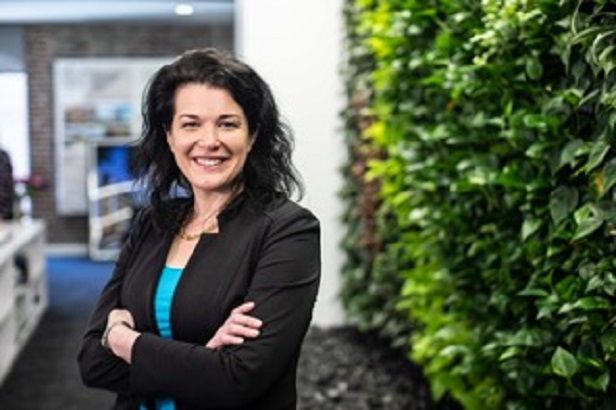WASHINGTON, DC—Washington DC recently passed the most progressive climate legislation in the country. The Building Energy Performance Standards (BEPS), as outlined in Title III of the Clean Energy DC Omnibus Act of 2018, states that, starting in 2021, owners of buildings over 50,000 square feet that are below a specific energy performance threshold will be required to improve their energy efficiency over the next 5 years. Projects below the performance threshold will be able to choose between a performance pathway, which requires that they document a 20% reduction in energy usage over the 5 year compliance period, or a prescriptive list of required energy efficiency measures.
"The Clean Energy DC Omnibus Act outlines guidelines to meet the goal for the city to cut 50% of its carbon emissions by 2032," explains Anica Landreneau, HOK's Director of Sustainable Design, who also serves on the DC Green Building Advisory Council and helped craft/support the development of the bill.
"Buildings play a significant role in this effort since they contribute up to 75% of the city's greenhouse gas emissions. The new law mandates that buildings will have to report energy usage and then meet new standards for energy performance or face fines."
There are several funding streams that will aid District property owners to implement energy efficiency improvements.
DCSEU. the District of Columbia Sustainable Energy Utility, offers financial incentives, technical assistance, and information to District residents and businesses.
PACE. "Property Assessed Clean Energy," is a financing structure that uses the District's ability to fund improvements in the public interest by attaching special tax assessments to properties.
"This is the same mechanism used by the District, and other cities across the country, to fund infrastructure projects such as sewer or road improvements. However, unlike most special assessment districts, PACE assessments are completely voluntary. Qualified property owners can opt-in to receive project financing that is repaid through an assessment on their property taxes. Since the assessment is attached to the property, the term of the repayment can be much longer than conventional financing (up to 20 years for DC PACE). And, as with other special assessments, the PACE assessment can stay with the property when it is sold," explains Landreneau.
Green Bank. In order to accelerate the deployment of affordable public and private capital for clean energy projects, a "green bank" was created.
Green Banks are institutions which finance projects that creates green jobs, lower energy costs, expand solar power, meet sustainability goals and reduce greenhouse gas emissions. The DC Green Bank will be capitalized with limited public funds to attract private capital investment, which are then used to offer leases, loans, credit enhancements, and other financing services to close funding gaps for energy focused retrofits, clean energy installation, and sustainable development projects, Landreneau tells GlobeSt.com.
1101 16th Street
One example of an energy retrofit is the repositioning of 1101 16th Street. The design links two adjacent 1970s buildings. By re-skinning the existing facades and updating the building mechanical system, the team was able to decrease the operating carbon emissions by more than 50%. They also saved the embodied carbon by reusing existing structures and cut the construction schedule and budget by about half from a new construction schedule.
"The team also took advantage of this unique repositioning opportunity along the 16th Street corridor to create an additional level of tenant space that replaces two mechanical penthouses on top of the existing structure. Adhering to zoning restrictions, this new penthouse level is set back from the main facade. This creates public and private rooftop terraces with views of the White House a few blocks to the south," explains Landreneau.
The team is targeting LEED Platinum. The building design is currently tracking more than 30% energy reduction from the ASHRAE 90.1 baseline.
© 2025 ALM Global, LLC, All Rights Reserved. Request academic re-use from www.copyright.com. All other uses, submit a request to [email protected]. For more information visit Asset & Logo Licensing.








